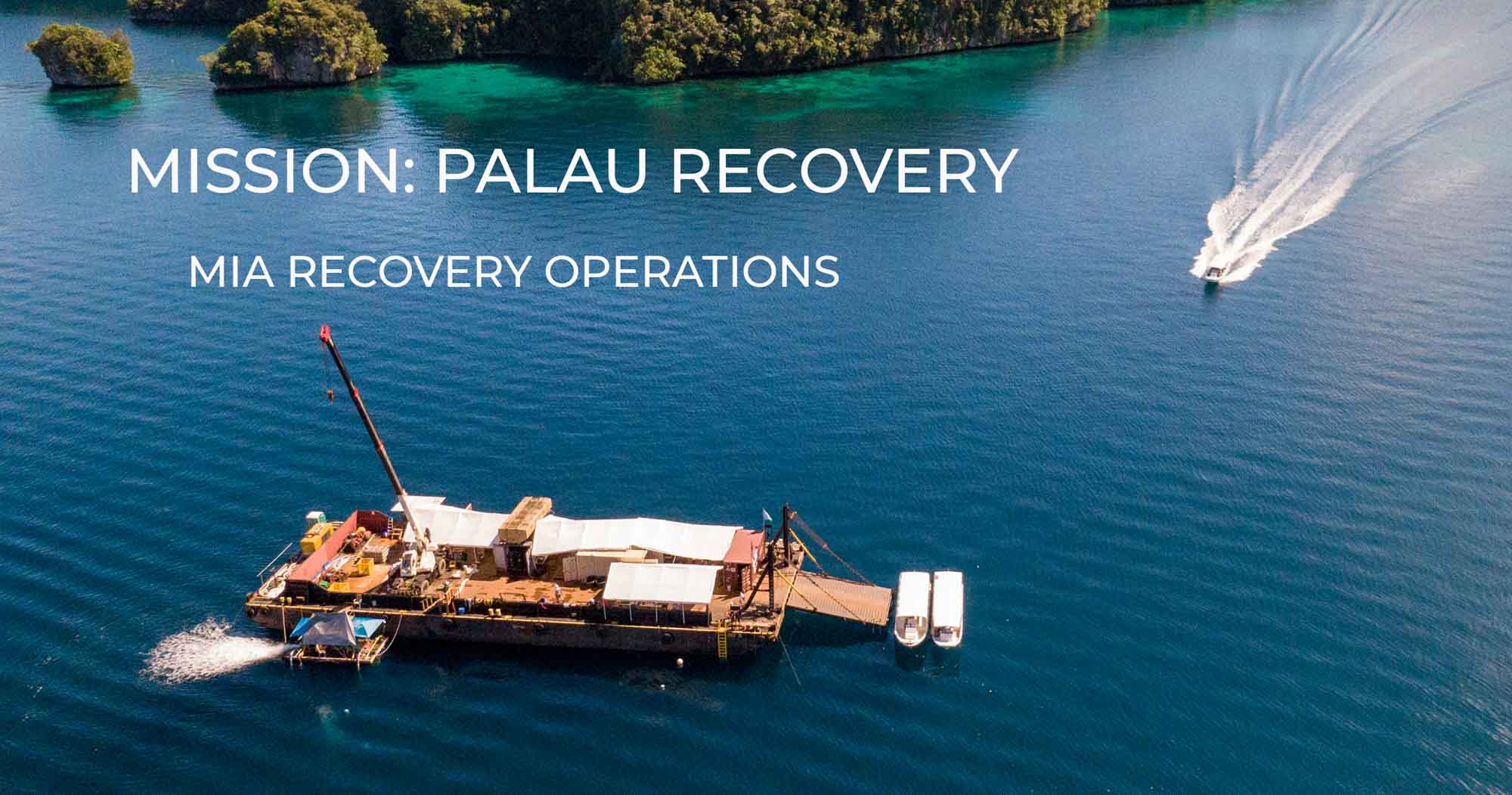
In August 2021, the Project Recover team set off for its first MIA Recovery Mission in the Republic of Palau. Our partnership with the Defense POW/MIA Accounting Agency made this a groundbreaking mission. The goal was to recover MIAs from a World War II crash site 120’ underwater.
It was a complicated mission. The team consisted of more than 20 people. Among them were:
- Derek Abbey, Ph.D., Project Recover President/CEO
- Pat Scannon, M.D., Ph.D., Project Recover Co-founder
- Dan O’Brien, Project Recover Administrator/CFO
- Andrew Pietruszka, Project Recover Lead Archeologist and Underwater Archaeologist at Scripps




Legion Undersea Services, Project Recover’s new partner, was also there. Legion is a commercial salvage diving company with an elite team of world-class divers, all retired military. Legion’s co-founders and managing partners are retired US Navy divers:
- John Marsack, Legion Undersea Services Co-founder
- Nick Zaborski, Legion Undersea Services Co-founder



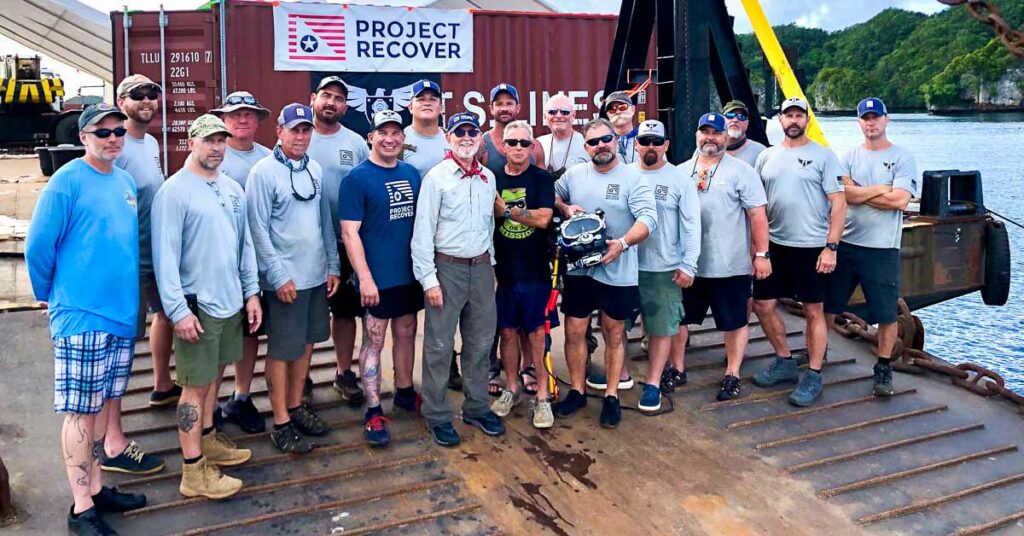
Building the Base of Operations on the Barge
Project Recover’s first task was to turn a 120’ barge into a base of operations for the MIA Recovery Mission. Fully configured, the barge had workstations for:
- Diving Area, including
- Recompression Chamber
- Surface-Supplied Diving Area
- Crane Operations:
- A 25-ton hydraulic crane retrieves wreckage or salvage baskets from the seafloor carrying up to 8 tons of sediment and possible artifacts.
- Archaeological Station:
- Dr. Pietruszka used this station to plan and build resources to excavate the crash site. On this mission, the team made a:
- PVC grid anchored to the seafloor to guide the excavation
- A hand-assembled ¼ Wire mesh to contain any debris that could fall from the wreckage pieces as they are being lifted by steel and nylon cables/straps 120 feet up and onto the barge.
- Inspection Station: salvage baskets were retrieved from the seafloor and then visually inspected for relevant artifacts.
- Screening Station: The crew hand-sifted sediment retrieved from the seafloor through a 1/4-inch wire mesh for artifacts
- Floating Dredge Barge: This hydraulic dredge is much like an underwater vacuum. It sucks sediment and potential artifacts from the seafloor through a giant hose.
- Dr. Pietruszka used this station to plan and build resources to excavate the crash site. On this mission, the team made a:
- First Aid Station
- Tool Room:
- PowerHouse:






















Daily Routine
The team established a daily routine that governed the month-long mission.
- A daily brief
- Raising of the flags The US and Palau national flags
- A team salute honoring MIAs
- Execution of the plans
- A daily debrief
- Lowering the flags
- Closing team rally, led by Legion’s John Marsack







US Military Volunteers & Pays Tribute
The mission drew many passionate and hardworking volunteers from the military population in Palau. Sgt. Pocaigue is one of them. He is the NCOIC of the Oceana Engagement Team assigned to Palau as part of the US Indo-Pacific Command. He is one of Project Recover’s newest team members.
In March 2022, Admiral John C. Aquilino visited the site of Project Recover’s MIA Recovery Mission. He laid a wreath on the water over the crash site. Sgt. Pocaigue was honored to play Taps for the ceremony.




Palau President Visits Recovery Site
The President of Palau, Surangel Whipps Jr., and the US ambassador, John Hennessey-Niland, paid a visit to the site of the MIA Recovery Mission in Palau.
Drew Pietruszka spent time briefing them on the missions’ archaeological operations. Nick Zaborski and John Marsack of Legion Undersea took them on a tour of their surface-supplied diving operations.
Derek Abbey, Ph.D., and Pat Scannon, M.D., Ph.D., honored the president of Palau, Surangel Whipps Jr., with a Project Recover team coin.
Project Recover’s friendship with the Whipps dates back to 1993. At that time, Pat Scannon was part of a team that found the Japanese trawler sunk by President George H. W. Bush in WWII. The Republic of Palau, preparing for the 50th Anniversary of the Battle of Peleliu at that time, was very interested in their search. President Whipps’ father, former Speaker of the House, dove with Pat on the Japanese trawler.





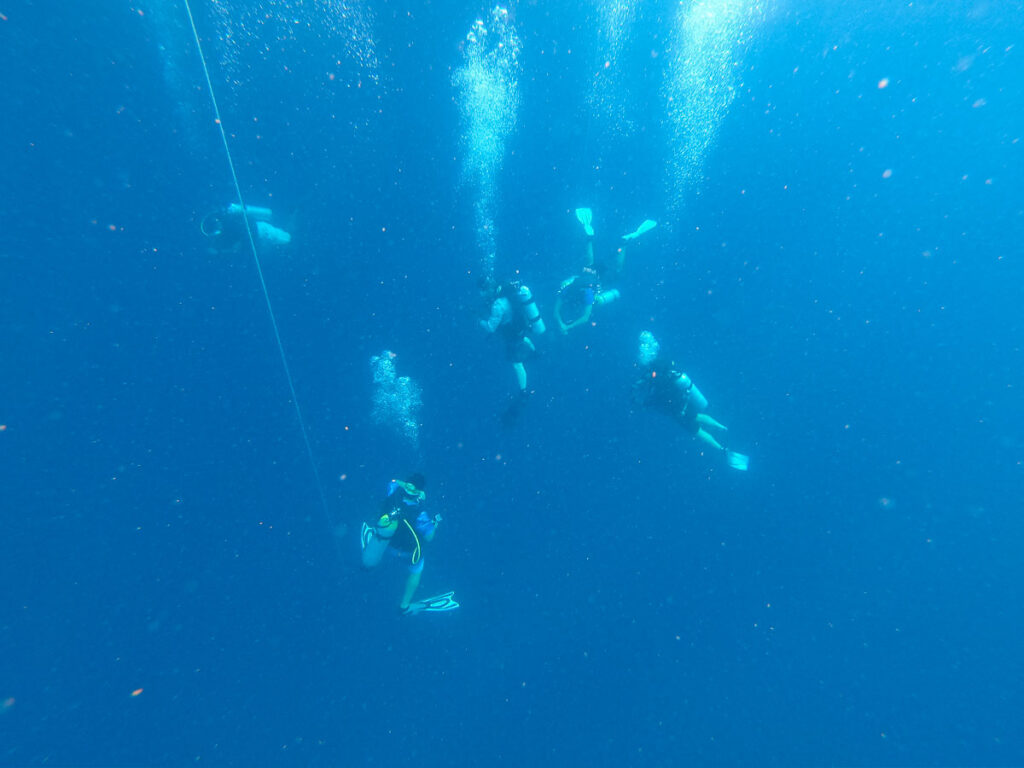


The Recompression Chamber
Our article would not be complete without acknowledging Divers Supply, inc. for its contribution to the success of Project Recover’s MIA Recovery Mission. Divers Supply rented a decompression chamber to the mission at 30% of their standard rate.
“We are thankful to the people who gave us freedom and kept war out of the US,” Robbie Mistretta, Vice President of Divers Supply, said about their contribution. “We have freedom because of them, and it wasn’t free.”




Mistretta honors those who serve. His brother, Eric P. Mistretta, was killed in action in Vietnam. Both his father and uncle served in World War II.
Destry Faidley, Divers Supply’s Sales Manager, has been a commercial diver since the 70s and is an expert in the field. If Legion co-founders, former US Navy divers, had questions about equipment, parts, or functional operations, they asked Destry.
“He was integral to the mission’s success,” said John Marsack, co-founder.
Surface-supplied divers require longer to decompress from dives. The recompression chamber allows divers to spend less time decompressing in the water. The recompression chamber allows the divers to omit their 20 and 30-foot in-water decompression obligation and allows them to conduct the remaining decompression obligation in the recompression chamber in a dry, controlled environment.
Crane Ops






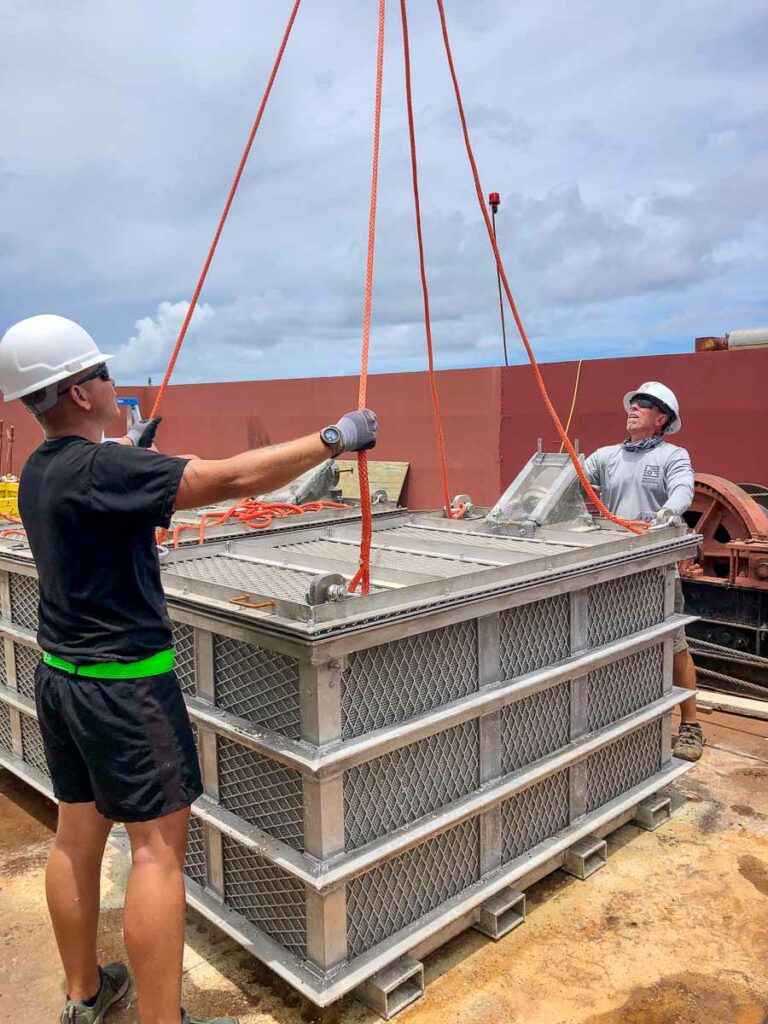






Diving Operations






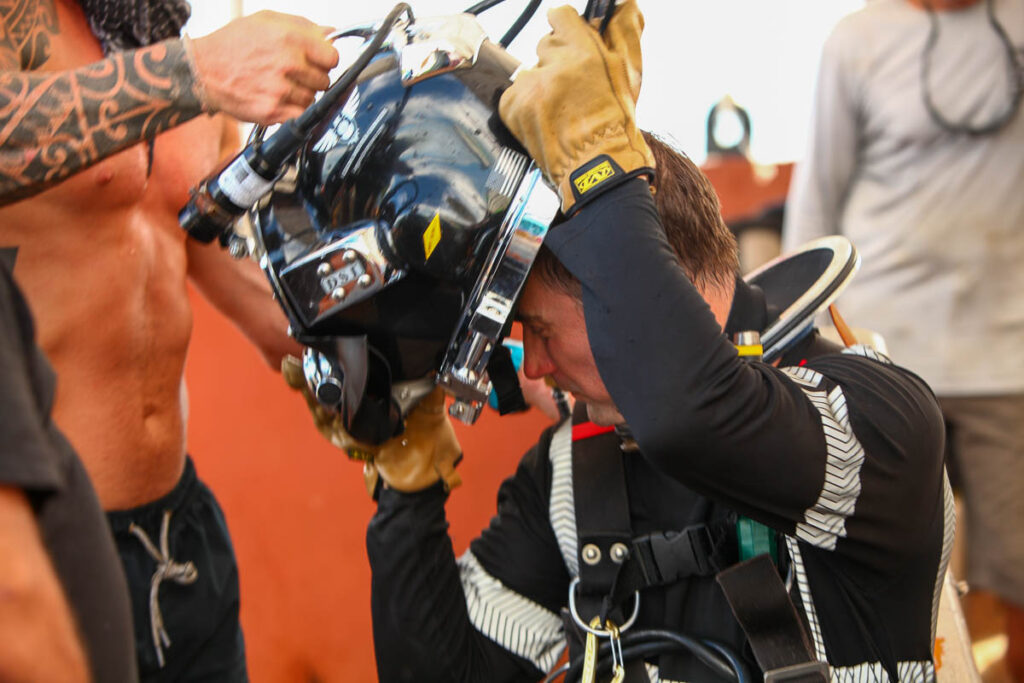









Screening







Dredge & Barge








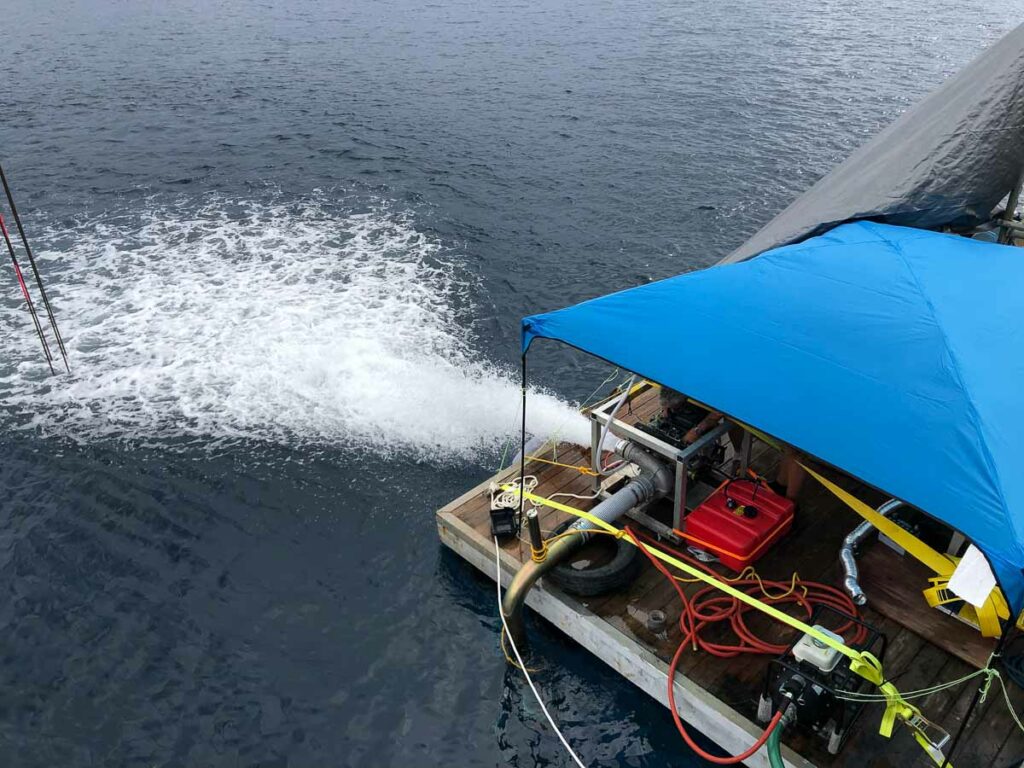


People















Have any MIA remains been recovered yet during Palau mission?
Hello Ben, yes MIAs have been repatriated from Palau. Here are a few of the stories:
https://www.projectrecover.org/finding-the-arnett-b-24-and-the-repatriation-of-8-mias/
https://www.projectrecover.org/arm1c-arthur-c-miller-repatriated/
https://www.projectrecover.org/wwii-mias-rybarczyk-sharninghouse-accounted-dpaa/
https://www.projectrecover.org/hellcat-discovery-dpaa-account-wwii-pilot-punnell/
and go here for more stories https://www.projectrecover.org/category/news/mias-accounted-for/
DPAA’s Website makes it clear that DiPetta, the latest MIA recovery in Palau, was a crew member on the TBM flown by Jay Ross Manown. After-action reports had assumed that the Manown crash site was closer to Arakabesan, but it appears that the DiPetta recovery was in Malakal harbor. Can you be a little more specific about where? It was originally assumed that pieces of the TBM near the Arakabesan-Koror causeway were parts of Houle’s TBM, but Houle’s crew was also located – by Project Recover – in Malakal harbor. Pieces of a TBM’s empennage on Ngerchaol and the “Dennis Whalen” right TBM wing in a cove south of Ngerchaol are either from the Manown or Houle aircraft – not sure it matters now – but this all calls into question the identity of the TBM that crashed (ditched?) nearly intact, next to the causeway (we have aerial photos). Any new thoughts on that? Because the Houle and Manown TBMs were the only two thought to have gone down in that area back when I was active with The BentProp Project. forerunner of Project Recover.
Hello Reid, this TBM is associated to “Dennis’s wing”. We still have not identified who’s TBM is along the causeway.
I led the first MIA recovery mission at Palau in January 1988 when on active duty with the US Navy and assigned to COMNAVMARIANAS in Guam. We recovered the USS Cabot’s VT31 TBM crew of LTJG Scott Jenkins, ARM2 Louis James Sumers, and AO1 Thomas B. Conlen, who died during the first Palau air strike on 30 March 1944. I was honored to be able to attend their funeral and internment at Arlington National Cemetery.
I have been interested in these recent recoveries and am hoping that more can be successfully resolved as well. I am particularly interested in the case of LTJG Charles Milton “Stubby” Pearson, USNR, and his gunner Thomas Watterson – both MIA Palau 30 March 1944. They were seen to crash into the water in their Dauntless Dive Bomber (of VB10 off USS Enterprise) alongside a Japanese Navy ship (either the Wakatake or Patrol Boat 31) which was sunk in that attack. Contradictory accounts place this sinking just west of Babelthuap near the West passage, or possibly in deeper water further north in the Kossol Passage.
Pearson’s plane was the only Dauntless Dive Bomber to be sunk in Palauan waters. The only other Dauntless lost made it out to sea where it ditched and its two crew members were rescued.
Hello Richard, we are still searching.
Blue Skies.
Family of Lt. Robert Bruce “Bob” Bidgood of Dublin, Georgia seek information on any possible confirmation of location of WWII B25, co-piloted by Lt. Bidgood, named TIKI, which went down during the major storm known as BLACK SUNDAY, April 16, 1944. To the best of our knowledge, the wreckage of TIKI remains the only plane out of 37 aircraft lost that day that has yet to be located.
Thank you for reaching out, David. Our Family Outreach Coordinator has reached out to you via email.
We all need to be aware of what you all are doing! You are our Post-War Heros to help bring all POWs and Missing in Action during Trainings home! God Bless you all!! We appreciate you and send our love and hugs to you during your process of doing this operation!!